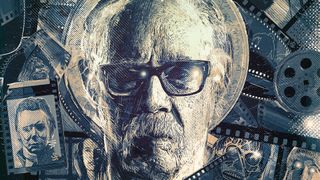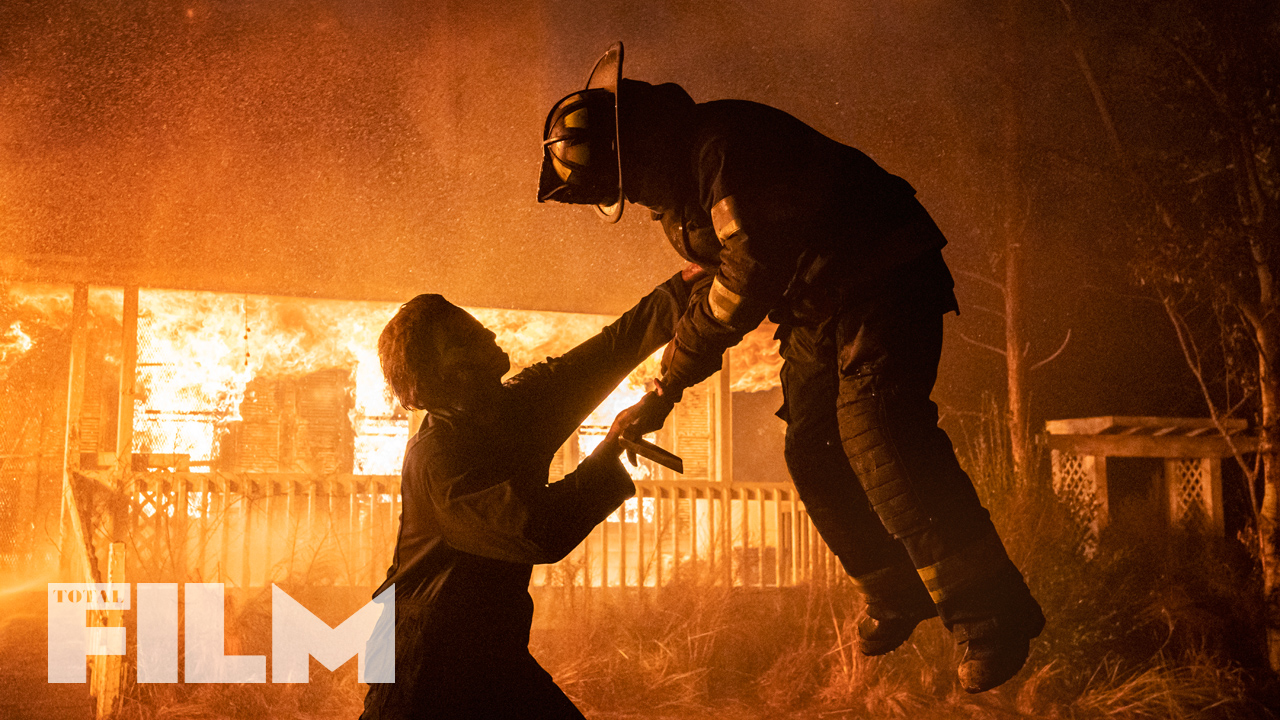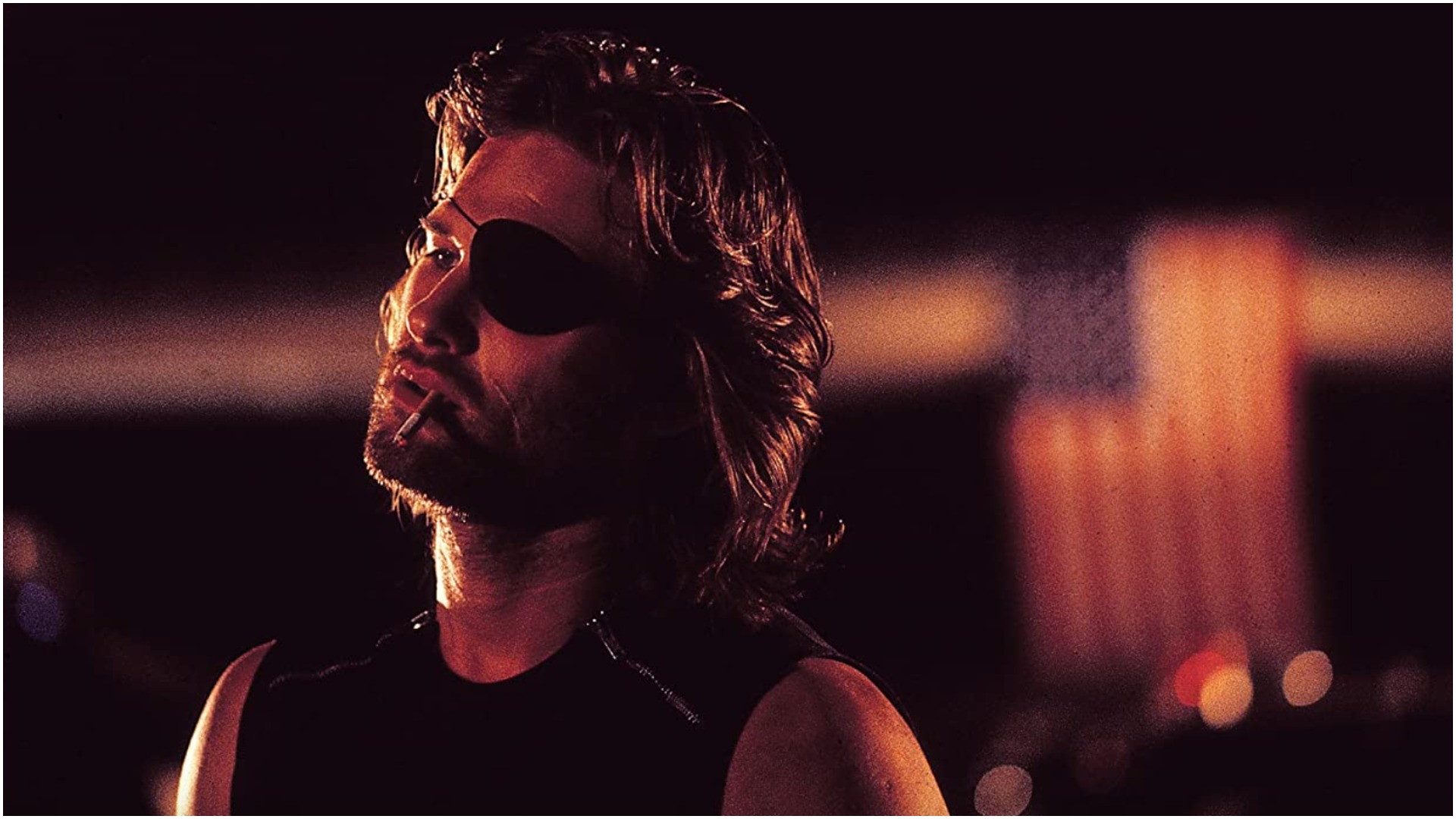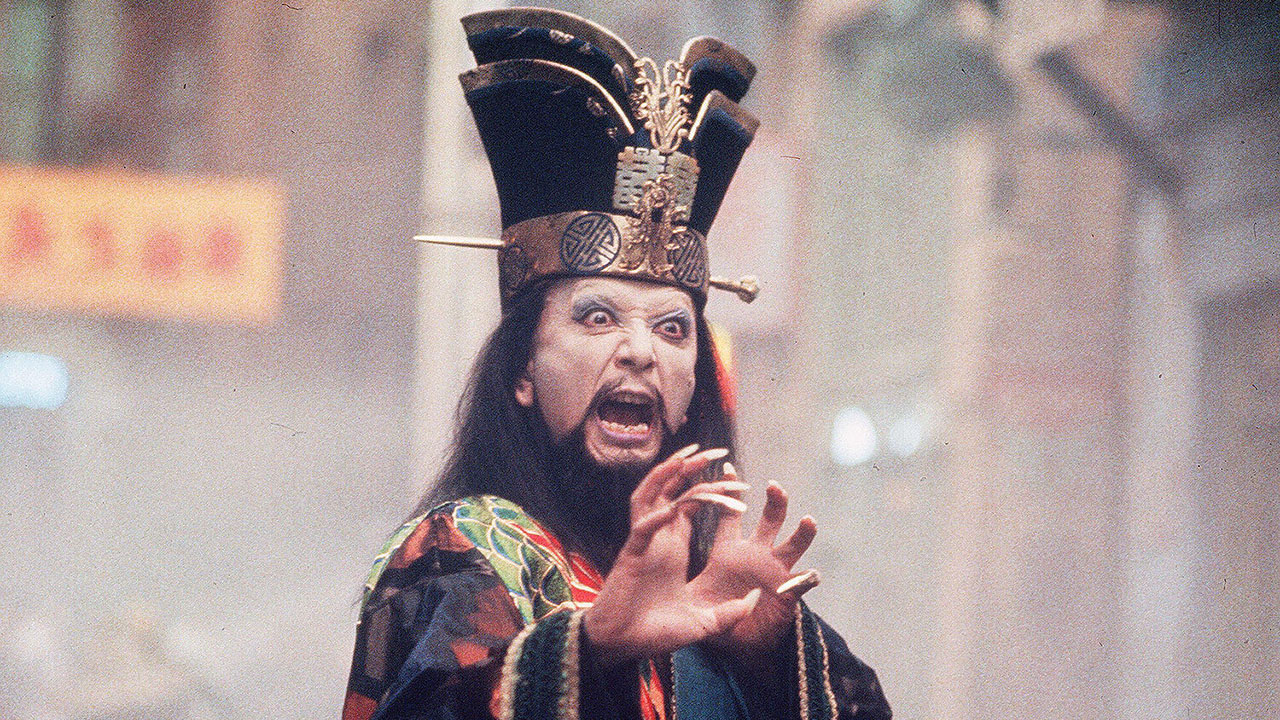John Carpenter Interview: "I’m not the biggest fan of talking about my films – but let’s do it" - pierremagards
John Carpenter Question: "I'm not the biggest fan of talking about my films – simply net ball's have it off"

Our John Carpenter interview firstly appeared in Total Film cartridge clip – sign away to the magazine Hera for more inside word, reviews, and features.
Hang out on Moving-picture show Twitter long enough and you'll sooner or later stumble across person posing this chin-scratcher: 'Which director is responsible for the longest, unbroken run of classic movies?' There are cases to glucinium made for plenty of filmmakers: Coppola, Kurosawa, Nolan, Villeneuve; but few hold a pumpkin-encased candle to John Carpenter. Between 1976's Assault On Precinct 13 and 1988's They Live, Carpenter made 12 films, near of which are well-advised all-timers today, even if they were rarely recognised as such by contemporary audiences and critics.
Carpenter was prolific, so few. A multi, multi, multi-hyphenate, he routinely manageable, wrote, produced and composed the medicine for his features. He was 28 long time old when he penned the screenplay for Precinct 13 in octad days, and just 30 when he changed horror forever with Halloween. He was a wunderkind to make Damien Chazelle look like a late bloomer. Nowadays atomic number 2'd be afloat with rich contracts to helm blockbuster enfranchisement fare, or burned with the auteur reverence of a Tarantino. In 1982, subsequently The Thing bombed, he was dumped as the director of Firestarter.
If Carpenter wasn't sufficiently known in his heyday, at that place's no peril of that anymore. During an hour-long chat in late June, Tot Film freely throws around words ilk 'masterpiece' and 'magnum opus' when describing his turn – congratulations he accepts graciously, simply not all that comfortably. Following a string of flops in the '90s, Carpenter fell out of love with movie making. His relationship to his work is complex to say the to the lowest degree. "You know, I'm not the biggest fan of speaking well-nig [my films]," Carpenter says over the phone from his home. "But let's do information technology."
If there's one project Carpenter is buzzed to talk about now, it's Hallowe'en Kills. The belated sequel to Halloween (2018) sees Carpenter return as both composer and executive producer. St. David Gordon Green, the new trilogy's director, values Carpenter's input above almost anyone else, telling TF: "Information technology's not like a citizens committee of faceless studio apartment executives giving you notes, information technology's the genius that created the enfranchisement! It makes you look practiced." Carpenter, rather modestly, sees his purpose as EP a contrasting way: "Everybody comments when the movie's done. Then I cause the same Eastern Samoa everyone else. IT's dull, but that's the way it goes."
Helium may not be spread to pat his have back, but Carpenter will enthusiastically heap kudos on others: Party is a "spectacular director!", and Halloween Kills "a slasher flic times 10!" It's a film he's thrilled to be associated with, especially because he no longer has to "suffer under the pressure of directing" and can work on the cinema in a electrical capacity he still enjoys – as the master behind its nostalgic, sinister score, alongside his Word Buffalo Bill Cody and godson Daniel Davies. "We tried and true some different sounds this time. We lease the picture guide us," He says. "And it's great fun. I'm very, really proud of this score – and the movie. This is what horror films should be."

This is what repugnance films should be.
John Carpenter
In a different life, Carpenter may have followed in the footsteps of his forefather and become a music professor himself, but a viewing of Taboo Satellite in 1956 set him depressed a different path. "It was psychotropic to me," he recalls. "Everything about IT, particularly because it had an natural philosophy soundtrack. It was corresponding I vindicatory got treated with LSD. I thought, 'Belly laugh, I own to do this.'" At the USC Civilize of Cinematic Arts he "learned how to execute the plumbing" and started work on what would suit his first feature film – sci-fi comedy Dark Star. Shot in pieces over four years for a grand total of $60,000, Carpenter considers Dark Star a "student film successful into a lineament film", though few student films are now regarded as cult classics.
Carpenter followed up Darkness Star with the Rio Bravo-inspired Assault On Precinct 13 in 1976. Differently a brouhaha with the MPAA, who took come out with the still-shocking scene in which Wienerwurst Doubleday's Warlord guns down a young girlfriend in rimy blood line while she clutches an ice cream, Carpenter remembers the film – his first shot to a schedule in just 20 years – as extraordinarily hard work: "I had no theme how hoodlum information technology was going to be. But I got to use Panavision widescreen, which I loved."
The next 12 years would shew the most fat, and demanding, of Carpenter's career for a simple, but surprising reason. "At one time I started [making movies], I was white-lipped I wasn't going to get to get along it again," atomic number 2 admits. "My whole goal in life was to be a business movie director, and make a living at it. So when a movie came along, operating room two movies, I'd say yes. I worked like a dog." In 1978 Carpenter shot both Halloween and Elvis – a three-hour TV movie with dozens of locations and speaking parts. "I was so tired. Merely I just couldn't tell no. Specially when you'ray young and starting out, you potty't say no."
Despite the imperativeness to come, Carpenter remembers Halloween as the to the highest degree fun he e'er had directional. "That was a blast. We were just a bunch of kids making a movie. Nothing has been like it ever since. It's always been pain!" Hallowe'en would pass on to be a phenomenon, yet it was anything but a succeeder from where Carpenter was standing. "I thought I'd made a bomb in Hallowe'en. Seriously, I did," he says, doubling down. "Initially, it was a regional issue. And it got a bunch of defective reviews. Many of them I took to heart: 'Carpenter does not had best with actors.' Ugh, my Graven image." IT was single after the film's New York release that pipeline picked prepared. "But at the time I did not know, so I was still winning jobs right and left."
On the heels of Halloween, The Fog became one of Carpenter's a few undisputed box-office hits, but it was nearly a wreck, with Carpenter profoundly unsatisfied with his first cut of the film. "I was too heavy-handed in some areas. I had fucked it heavenward, to be honest with you. And I realised, 'I can't let this out this way. I have to do better.' So we did." American Samoa for the notoriously naff 2005 refashion: "I was delighted, because I didn't have to do anything and I got paid again – that was just wonderful!"

Thither's belik a third or maybe flush fourthly story about Snake.
John Carpenter
Carpenter's defining collaborator during the '80s was a former Walt Disney kid called Kurt Russell. The pair became "fast friends on the basis of professionalism" during the fashioning of Elvis and would reunite on Escape From New York which, with a budget of $6m, was Carpenter's most ambitious project at the time. Temporary with Ernest Borgnine and western icon Lee Van Cleef thrilled Carpenter, while Shake LA corpse his only sequel arsenic a director. Does Snake Plissken hold a special place in his heart? "He's a character that Kurt is passionately fond of. He convinced Maine to do the continuation," he says. "There's believably a third or possibly even ordinal news report about Snake in the grass. I don't know if we'll e'er have it, but I believe that He deserves it."
The Thing – operating theatre rather the reception to The Thing – would turn out a turning point in Carpenter's career. Shooting on location in Alaska, and with Rob Bottin's hard special effects, could have been a disaster, but Universal were "very supportive" having gone done a similar receive with Jaws – a film that turned out OK for all encumbered. Where the studio did have major problems was with the film's nihilistic ending. "We actually came up with the closing lines up there on location," Carpenter recalls. "Universal, once they saw what we'd done, said, 'Can't you be elated here?' I had a distribute of pressure level to change it." Needless to say, Carpenter perplexed to his guns. And what cut the deepest about The Thing's commercial failure is that the film was on the nose the movie Carpenter envisioned, none compromises. "It was despised by everybody when IT came out because it was so gloomful. Information technology's the end of everything. I mean, come happening!"
While IT wasn't the end of Carpenter's career, it certainly felt that way for a while. "I was fired off of Firestarter because of The Thing. They kicked my posterior to the pavement. Sol I was looking for a job, and I did Christine." A twelvemonth later Carpenter would personify back in Hollywood's good graces later helming Starman – a film outside his pilothouse, just one he found mainstream success with. "It was an opportunity to do a romance. It's awe-inspiring that it came along. Jeff was incredible to work with."
Bridges was Oscar-nominated for his performance, and Starman's success allowed Carpenter to get another leftfield project off the terra firma: Big Trouble In Little China. "I loved kung fu movies compensate from the number one one I saw – Five Fingers Of Death. Oh my God, it was sporty a rejoice." Shooting Big Trouble… was similarly festal for Carpenter, but the same can't be aforementioned for working with 20th 100 Fox on the film - a fraught experience that caused Carpenter to step aside from major studio moviemaking. "Along Big Trouble… I was working with the head of a studio WHO was an by choice brutal human organism. I barely didn't neediness to deal thereupon any more."

I loved kung fu movies right-handed from the first one I saw
John Carpenter
Carpenter temporarily found a home plate at free production company Lively Films, World Health Organization offered him a simple slew: a frugal $3m budget in return for complete creative assure. Prince Of Darkness was the first project to result – a Quatermass-inspired hit of theology and theoretical physics. Darkness was swiftly followed aside They Live – a "primal scream against Reaganomics" that has become increasingly relevant over the years, something that amuses Carpenter because "It has a big fight in the middle that has cypher to set with anything!" Imagery from They Live has been utilised in opposed-capitalist protest artistry, but in recent years Carpenter has institute himself stamping out incorrect readings of his work. "The right fender is nerve-wracking to adopt that movie for its ain. They think that the aliens are Jewish. For fuck's sake – surface, you idiots!"
In look back They Living was the end of an era. It would take quaternary years for his next take – Memoirs Of An Invisible Man – to reach screens, and the films that followed largely failed to capture the creative spirit of his '80s prime. He eventually burned outgoing following 2001's Ghosts Of Mars ("I don't like acquiring up in the morning. I'd rather sleep in."), and wouldn't direct a feature again until 2010's The Mrs. Humphrey Ward. What was it that tempted him back? "The pressure. Just blackmail," he admits. "And I got to oeuvre with any real talented Lester Willis Young ladies."
Things changed drastically for Carpenter in 2015, later He survived a "pretty serious sickness". In the years since atomic number 2's focused on the things that make him happy: namely videogames (he's presently whiling departed the hours with Assassinator's Creed: Valhalla and Fallout '76) and music. Earlier this year, atomic number 2 put out his fourth studio record album, Lost Themes Trio, and in addition to his work on the new Hallowe'en trilogy, Carpenter says he's agreed to score another movie later this year. He doesn't rule out a take back behind the camera either. "I'm working connected it. I'm always thought about it. I'm always looking tabu for a project that would be great. I would answer it, sure, but the conditions own to be right. Thither has to be enough money, and on that point has to be enough time." He even has an thought, and he's only half-joking: "Kurt's Santa Claus now – I require to try to get him to flirt an evil Saint Nick! I think he'd make up great."
As for Allhallows Eve, with the last photographic film in David Gordon Green's trilogy due out in 2022, Carpenter could be about to leave Haddonfield behind permanently. But, ever the realist, he doesn't see this as the end of the road for Michael Myers. "I'd like to caution you that if Halloween Kills and Halloween Ends make money, I don't know that you really have seen the destruction [laughs]. Maybe of my involvement! Possibly they will say, 'We require a fresh approach. Let's get this bum out of here!' Whatever… See, I've changed my whole flavour later in life. I embrace everything. Everything is wonderful."
Halloween Kills reaches United Kingdom and US cinemas Oct 15. For Sir Thomas More, check out the Halloween Kills issue of Total Film.
Source: https://www.gamesradar.com/john-carpenter-interview-halloween-kills/
Posted by: pierremagards.blogspot.com



0 Response to "John Carpenter Interview: "I’m not the biggest fan of talking about my films – but let’s do it" - pierremagards"
Post a Comment